This gypsy jazz guitar lesson is an introduction to “La Pompe”, the typical rhythm guitar strumming used in gypsy jazz, aka Manouche. You will learn how to play chords and chord progressions in the gypsy jazz style.
Mastering La Pompe requires daily training. Practice the steps outlined in this lesson slowly until you feel comfortable with the technique.
How the basic chord accompaniment technique works is best seen in the video further below but also read through the tutorial for more tips on how to use this technique properly.
By popular demand, I also provided the guitar tabs and chord diagrams of the video’s intro.
La Pompe – The Technique
Here’s how the La Pompe rhythm looks in notation:

Combine the two steps below and you have the basic La Pompe rhythm movement.
Step 1
Play an upstroke, then a downstroke, and quickly move your right hand towards the upper part of your guitar, so that you finish this movement with your right hand up.
Emphasize the sound of the lower strings more than the sound of the upper strings.

Step 2
Step 2 is a fast downstroke, also called the “slap”.
Emphasize the sound of the upper strings more than the sound of the lower strings.
![]()
Make sure that:
- You use your elbow and not your wrist.
- Your wrist is slightly bent.
- You hit all of the strings.
- You are making a fast jump up at the end of step 1.
- You freeze after each movement and are not making unnecessary movements.
The Intro
Here are the guitar tabs and chord diagrams for the video’s intro.
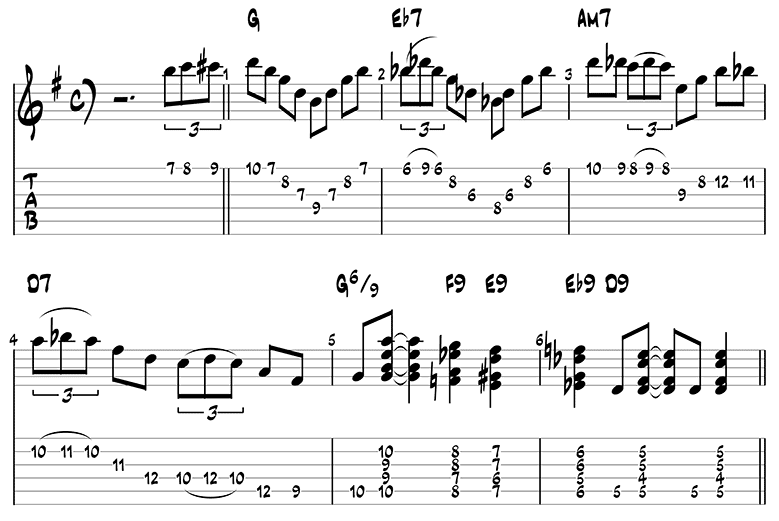
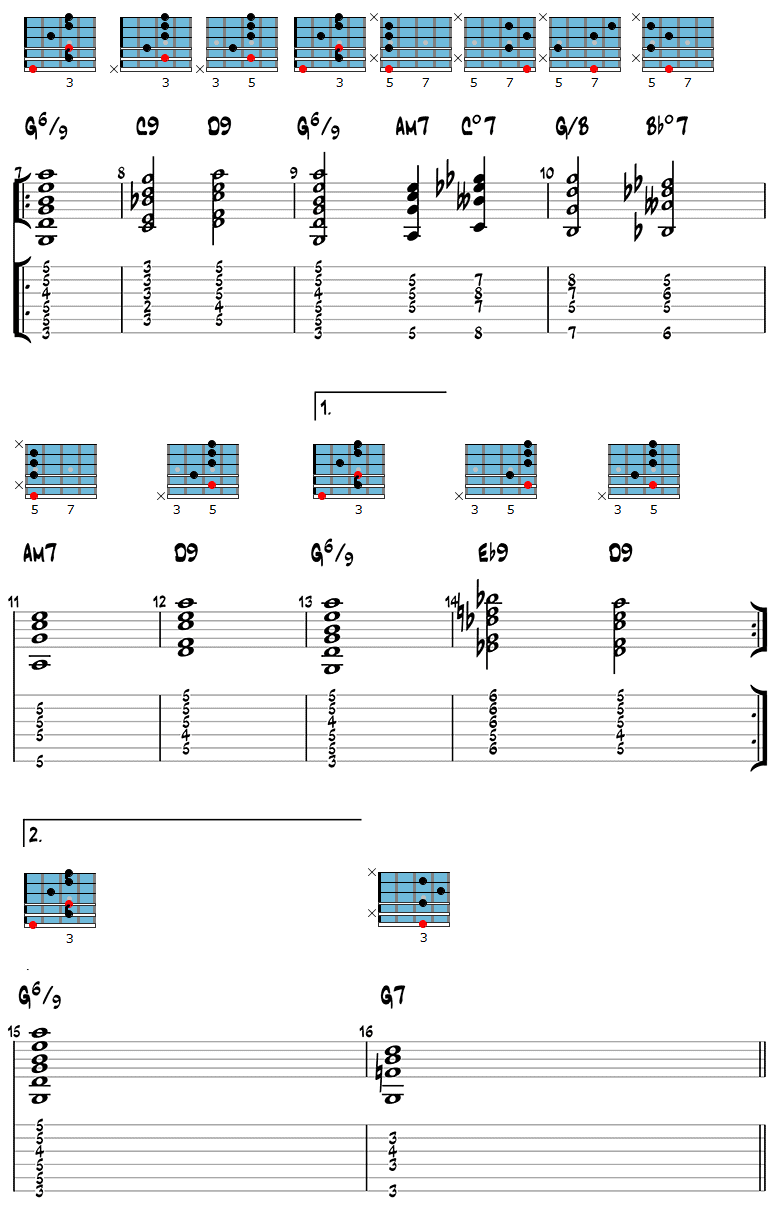
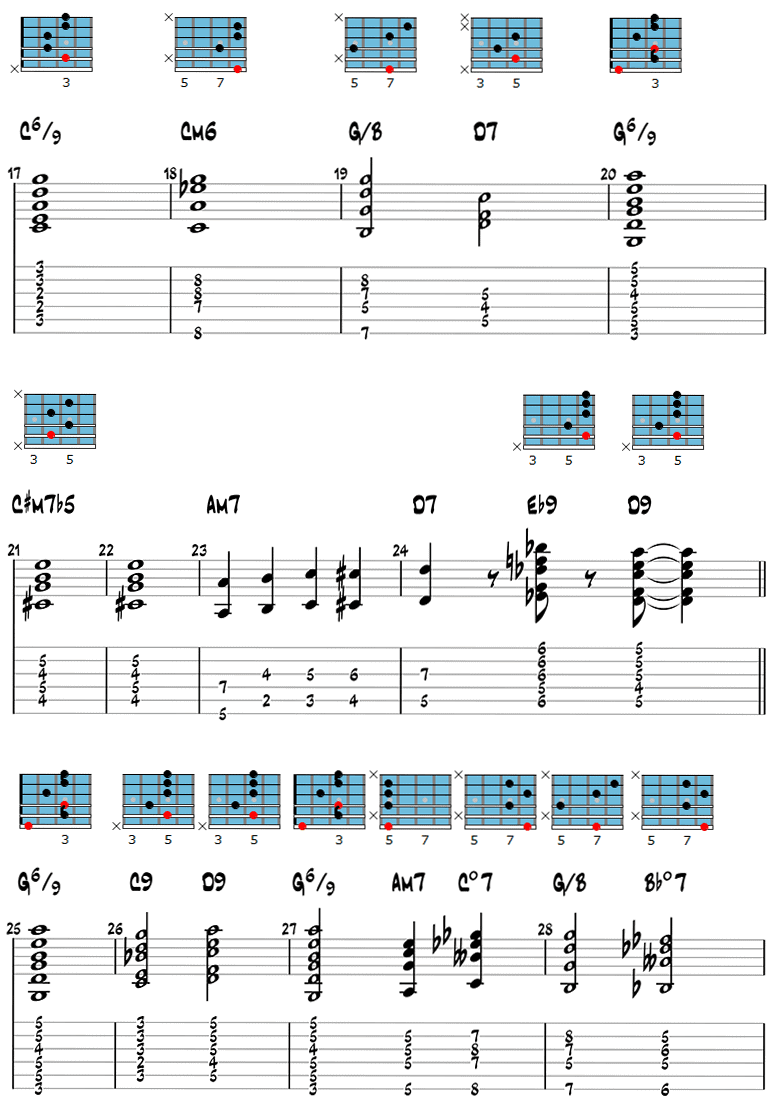
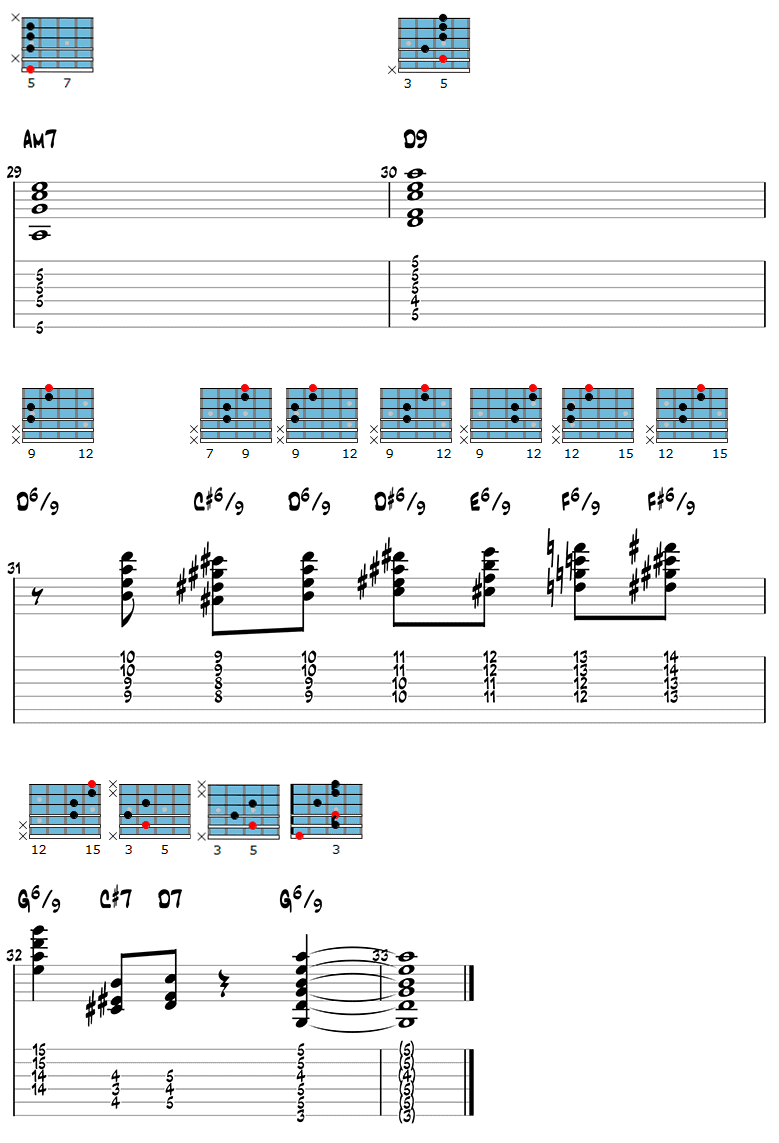
Chords & Chord Progressions
Here’s the chord that you can see at 4:07 in the video, a G6add9 (or G13).
This chord sounds nice and full, but can be hard to finger for some because the bass note is fingered with the thumb (p in the chord diagram) and there is a barré on the 4th and 5th string with the second finger.
If this chord is too hard for you at the moment, use the G6 from the first bar of the first chord progression below (see 5:00 in the video).
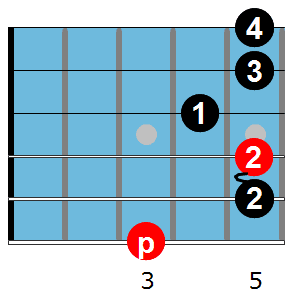
There is also a minor variant of this chord, Gm6add9 (see 14:47 in the video), which sounds very nice:
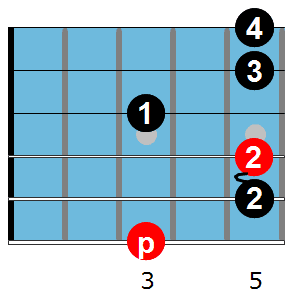
Chord Progression 1
Here’s the first chord progression from the video (starts at 5:32).
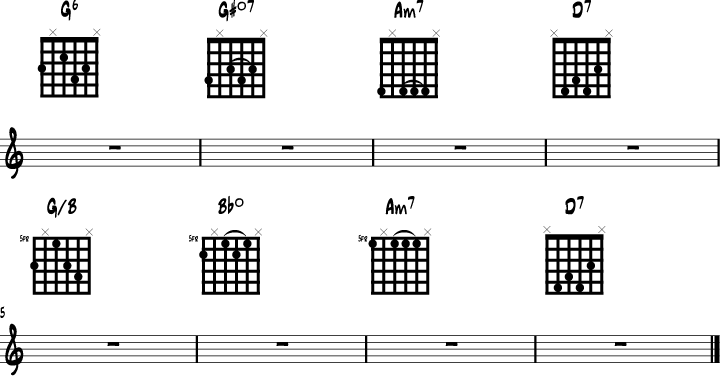
Chord Progression 2
The second chord progression is a I-vi-ii-V in D major (starts at 11:20 in the video).

Chord Progression 3
The third chord progression is a G minor blues (starts at 14:38 in the video):
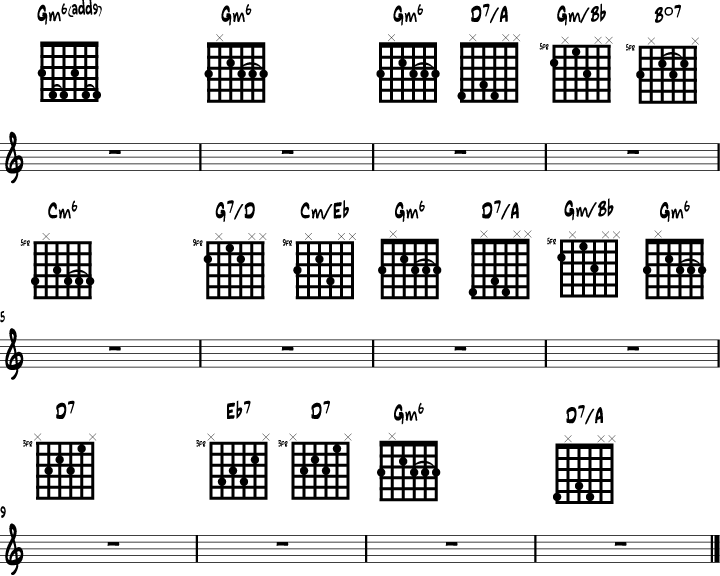
Here are the guitar tabs for the ending (see video at 19:04):

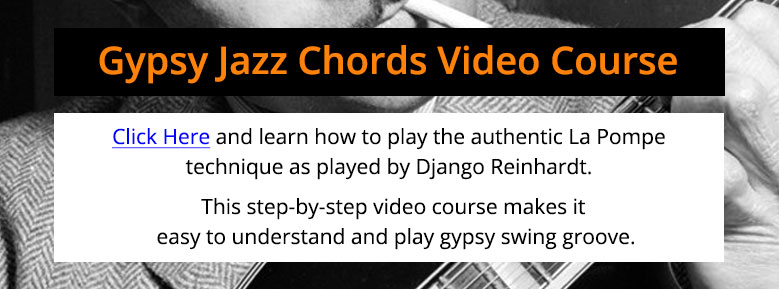

Also, there’s no D in the D7/5 chord in the “chord progression 3” section. Since I’m still learning theory, I’m wondering whether or not that’s normal somehow.
Hello! It looks like your diagram for D6/A in the “chord progression 2” section is wrong. Either the wrong fret is indicated, or the wrong fret is indicated for the other chords in that section. Also, there’s a 9th on the second string in that diagram.
I’m using your diagrams to learn some cool new chords, but I think they might trip-up someone who is less familiar with theory. Cheers!
Thank you for this introduction. A great lesson that will improve my right hand technique and give me some new chord forms. Brilliant!
Thank you. This is my favourite style.
thanks very much for the inspiring lessons, very clear instructions
Hi.
Je joue essentiellement du jazz manouche et même je compose mes propres chorus.
Vous avez fait une synthèse de la base du gipsy swing de façon éclatante.
Ce qu’il convient de dire aussi c’est le relâchement de la main gauche immédiatement après la frappe.
Bravo .. c’était super
Dobra lekcja
Great lesson, thanks!
Gracias Dirk, super interesantes estás lecciones, cada vez que ingreso a estas, aprendo más. Saludos desde Quito Ecuador.
happy sound
Similar to Freddie green voicings
Great lesson! Thanks a lot. I love Gipsy Jazz, Django and his disciples. And Yaakov is surely one of the best musicians of this rich and soulful style. He is also a generous teacher. Greetings from Brasilia. Pedro Noleto
Muy instructiva, buena lección, gracias, buen día
This is so great! I’ve been struggling with chords and the breakdown of La Pompe.
Thank you!
great lesson! what is this song’s title and writer?
The chord progression is from “Oh Lady, Be Good” by George Gershwin
Congratulations!!!
Mamash enjoyed your lesson pal. I am going through trouble with chords. So this lesson was really useful. Really nice of u to make this knowledge public. Are u giving lessons online?
wow, this is quite good, thanks!
toda raba! This is such a clear way of explaining things with tabs and diagrams.Thank you.
My pleasure. Happy you love it!
Exactly what I was looking for! Thank you.
Great! Enjoy
Thank you Dirk for this nice “La Pompe” lesson! I love Django Reinhardt jazz guitar style!
Yes, there is so much to learn from Django!
Very enjoyable lesson, Yaakov! Love your passion👍.
Thanks so much for your comment! Cheers
wow! i never knew that jazz gypsy has a lot of minor 6. thank you very much.
When you see what was left of the fingers of Django the minor6 was “in line” with his left hand, but still…
Minor6 and 69 is also a latin favorit
That’s right. Django listened to a lot of classical music. He really loved Ravel and Debussy and I think that the 6 sound in major and in minor in Django’s music has a strong connection to the classical music he loved. Cheers!
Hi! Is available also the score of the intro you play at the beginning of the video? Thanks!
Hi Elettra, I added the guitar tabs and chord diagrams for the intro…